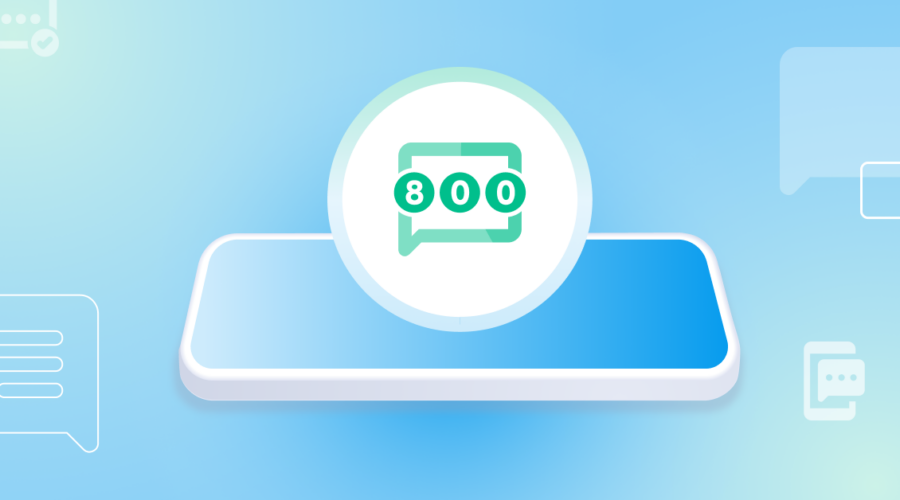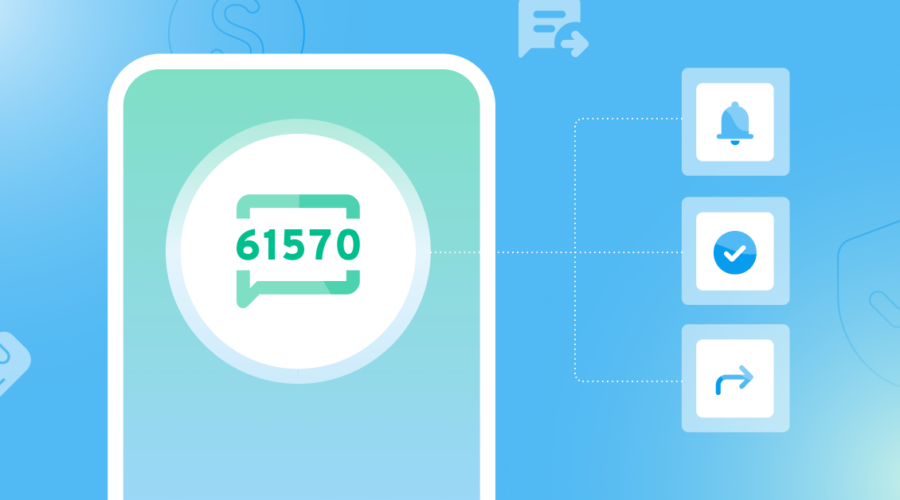The tools we use to communicate with friends and family are being adopted by the healthcare industry into a growing segment of telehealth solutions. Text messaging, in-app calling, and other tools are finding their way into the doctor offices, pharmacies, and mental health providers.
With the industry increasing their use of these tools, it’s worth looking at what telehealth is, what the benefits and potential challenges of it are, as well as making an educated guess on the future of these tools and the healthcare industry.
6 benefits of new technology in the healthcare industry
Setting aside how the COVID-19 pandemic forced all of us to communicate with businesses in new ways, the healthcare industry’s adoption of new communication channels for telehealth and patient engagement jumped by leaps and bounds. According to the CDC, 95% of surveyed health centers reported using telehealth during the COVID-19 pandemic. That’s compared with 43% of surveyed health centers the previous year.
The expansion of telehealth use has shown some of the benefits that this new technology provides to both patients and providers, including:
1. Reduction in the number of office visits
There are absolutely times when you need to visit the doctor’s office—annual check-ups, blood work, or anything that requires the use of advanced medical equipment (no at-home x-ray machine to see if your leg is broken). But for routine questions, or just to have a doctor check if you have a common cold and prescribe you some cold medicine, a visit to the office can take time (both away from work and travel time), as well as expose patients to potential diseases while waiting to be seen.
The growth of video in telehealth solutions has enabled doctors to reduce the number of patients that need to come into the office for simple medical needs, while at the same time allowing those doctors to see more of those patients, providing care to some that may not have sought it out before.
2. Expanded access to healthcare
One of the biggest benefits that’s been realized with telehealth has been expanded access to areas that didn’t have any, or at least easy, access to healthcare providers. And this isn’t limited to primary care providers or even specialists for specific diseases. Telehealth solutions that leverage voice calling, video, and text messaging have expanded access to mental health services to regions and populations that previously had little or no access to them. In fact, 34 percent reported that telehealth was the only option they had to see their provider. With this accessibility, telehealth opens up new markets to patients in need of crucial services.
3. Reduction in provider overhead
The ability to take appointments virtually means that providers can lower their overhead. Fewer people coming into the office can result in lower staff needs and a reduction in space requirements. Added to that, telehealth solutions allow doctors to take more appointments throughout the day. That can result in increased revenue for the practice. But it’s not just about making more money, that revenue can in turn fund better equipment, pay more specialists to be on staff, and improve the experience in the office overall.
4. Reduction in patient costs
Saving patients money creates a better patient experience. With many health insurance providers covering telehealth options, this allows patients to take advantage of this new technology at either the same, or potentially lower, rates than an office visit. Added to that, since telehealth visits don’t require travel, this can save patients the costs associated with taking time off of work and driving to and from an appointment.
5. Reduction in patient no-shows
Missed appointments are a huge source of lost revenue for businesses of all types, but for the healthcare industry it’s a staggering amount of money. Nationwide, the healthcare industry loses about $150 billion annually to missed appointments. By combining appointment text reminders and virtual appointments that have a lower barrier for patients to attend, practices can improve their profits just by getting patients to login and show up for appointments.
6. An improvement in the quality of care
Most of us see our doctor once, maybe twice a year. Between scheduling appointments, taking time off, and waiting to be seen it can be an all-day affair just to have an annual check-up. And unless something’s really wrong with us, we probably don’t take the time to visit our doctors. With telehealth, patients can get a better quality of care just by having more available access to their providers. Instead of annual visits, regular check-ins can help identify patterns to uncover easily ignored symptoms, ultimately improving the quality and continuity of care (instead of waiting until there’s a major problem or just trying to cram everything into a yearly visit).
Potential challenges of widespread telehealth use
Just because there are so many benefits to adopting telehealth solutions doesn’t mean that there aren’t some potential downsides. Telehealth technology continuing to grow and advance relies on both patients and providers adopting it. And, while recent events have helped to drive that adoption, there are potential pitfalls that could slow that growth or prevent some patients or providers from adopting telehealth as a solution.
Providers are relying on patient adoption to invest in telehealth
The growth of telehealth is something of a chicken and egg problem: providers don’t want to invest in building or purchasing telehealth solutions if patients won’t use them, and patients can’t use them if providers don’t invest in them and make them available.
While the COVID-19 pandemic resulted in a massive movement towards telehealth, driven largely by millennials, and more providers are offering some level of telehealth than ever before, patient adoption is still a barrier to the technology’s growth. A lack of patient adoption can take a lot of forms, but one area that’s not often talked about is technology barriers on the patient side.
While telehealth can make healthcare accessible to people that may have previously not had access to specialists such as mental health providers, a lack of access to high speed internet can present a barrier to accessing it as well. With much of the country lacking reliable, affordable high speed internet (or even reliable mobile phone coverage), telehealth adoption is a multi-tiered problem that’s hard for any one person or organization to solve.
Continuity of care may be lacking
Having a primary care physician (or PCP) means having a doctor that knows your history, your concerns, and what the best course of action is for you. If your PCP has a telehealth solution that lets you schedule appointments, then continuity of care isn’t a concern. But for those that either don’t have a PCP, or are just using telehealth for quick requests, seeing a different healthcare professional each time can result in not getting patients not having their questions answered, or having to spend more time giving background on their needs, time a regular provider wouldn’t need. This can be significantly improved with shared patient information systems but those aren’t available across provider networks.
What is the future of telehealth?
As this technology continues to grow in adoption, it’s worth looking at what the future could look like. Much of this is speculative, with technology either currently in trials (and facing a lengthy approval process), or a shot in the dark based on conversations that are being had around the industry.
I’ll also caveat this by noting that even as telehealth continues to grow and expand into new areas, there will always be a place for in-person visits to a medical professional.
Active monitoring of health via sensors that transfer data
As we have more connected devices on us, one possible direction is for wearable sensors that can transmit data to healthcare providers in real time. While devices to monitor diabetes and alert patients to their blood sugar status already exist, those devices only alert the patient via their smartphone or another tracking device.
The idea behind these new sensors is that they could provide healthcare providers with real-time information about a patient’s health, which could in turn allow them to have better conversations during appointments, as well as enable interventions if they see trends that could speak to a larger health problem.
AI as diagnostician
One area that Europe is already seeing some advances is the use of AI to help diagnose conditions. While early trials are seeing AI used to analyze skin lesions for possible disease, future iterations could see AI used to monitor data from smartwatches or other sensors to look for patterns and work as a prevention tool, alerting patients to potential emergency conditions before they happen, allowing them to get help or treatment before a crisis occurs.
Smartphones used for self-exams and assessments
Given that most of us value our smartphones more than anything, using these devices as part of a telehealth solution makes sense. While their use hasn’t been validated yet, the scalable nature of using smartphones to perform self-exams ahead of a telehealth appointment could help make the service not only more accessible, but continue to limit the number of visits needed for a doctor for non-emergency visits or visits that don’t require highly specialized equipment like an x-ray or MRI machine.




